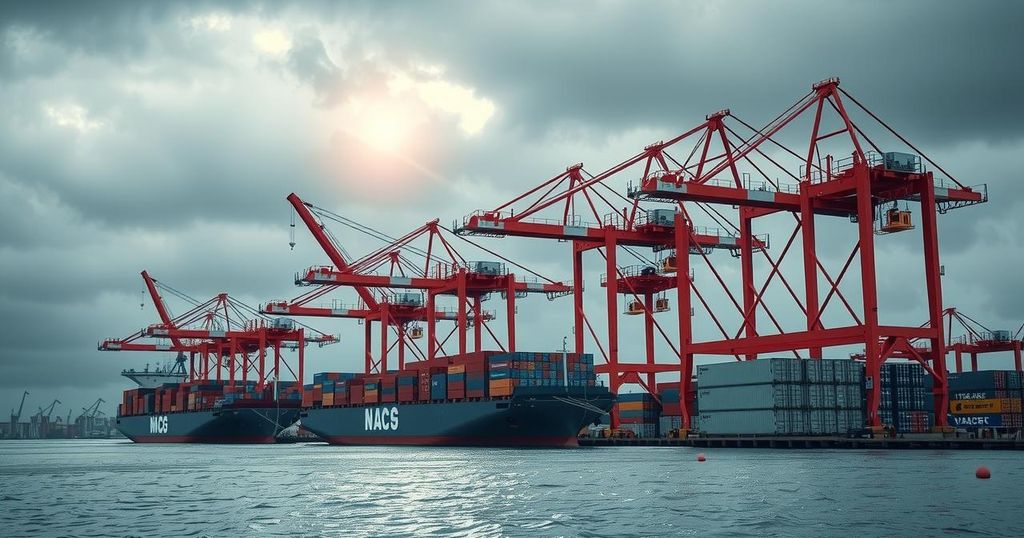President Donald Trump confirmed that his 25% tariffs on Mexican and Canadian goods will start on March 4, citing ongoing drug trafficking issues. An added 10% tariff on Chinese imports will also commence on the same date. Discussions are ongoing with officials from Mexico and Canada regarding these tariffs, with the situation evolving as trade negotiations continue.
United States President Donald Trump announced that his planned 25% tariffs on goods imported from Mexico and Canada will take effect on March 4. This decision is driven by ongoing concerns regarding drug trafficking, specifically noting that a significant amount of fentanyl enters the United States from these countries. He clarified on his Truth Social platform that these tariffs would remain in place until there is a marked reduction in drug inflow.
In addition to the tariffs on Mexico and Canada, President Trump stated that an additional 10% duty would be imposed on Chinese goods, complementing an earlier 10% tariff instituted on February 4. Trump emphasizes that the measures aim to combat drug issues that he describes as harmful and unacceptable, stressing the urgency of addressing this crisis in the nation.
Following some confusion regarding the initiation date of the tariffs, Trump’s recent cabinet meeting remarks suggested the possibility of delaying the tariffs to April 4. However, it has been made clear that the March 4 deadline for these tariffs is confirmed, although there will be a comprehensive review of tariffs for all countries by April 1.
Mexican Economy Minister Marcelo Ebrard is scheduled to engage with U.S. Trade Representative Jamieson Greer and Commerce Secretary Howard Lutnick to discuss ways to prevent the implementation of the tariffs. Meanwhile, in Canada, Public Safety Minister David McGuinty expressed confidence that the measures Canada has taken to tighten border security will meet U.S. concerns.
President Trump’s announcement reveals a firm stance against drug trafficking through the implementation of significant tariffs on imports from Mexico, Canada, and China. The deadlines and details surrounding these tariffs reflect ongoing negotiations and considerations by both U.S. and foreign officials as they seek to navigate trade relations amidst shared concerns about drug importation. The situation remains dynamic as discussions continue with foreign representatives.
Original Source: www.usnews.com






